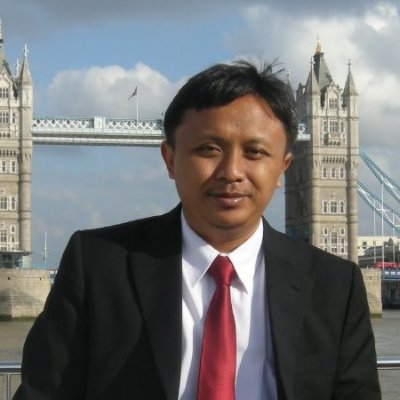Shop talk: Breaking PLN's 35GW threshhold
Indonesia's 35GW power procurement plan was always ambitious. But PLN is much closer to delivery in 2019 than many were predicting. Teguh Harsono, senior manager of fund raising at PLN, outlines the deal pipeline for the coming year and the likely completion date for the full 35GWs.

Trade & Export Finance (TXF): With two IPP financings closing in the last three months, and four in the pipeline, how close is PLN to reaching the Indonesian government’s 35GW procurement plan by 2019?

Teguh Harsono (TH): There have been a few adjustments to the 35GW power plan because of Indonesia’s current economic situation. When the government mandated this programme it expected the economy to grow by 7%, but last year there was only 4-5% growth, and therefore we had to make adjustments as some projects were postponed.
In 2019, we now plan to have around 26GW online instead of 35GW, with the procurement of the extra 9GW expected to take another two to three years. We are sure the target will be reached by 2022.
PLN has already mandated 9GW which is expected to come online by 2019 so at least if there is any more delays in the execution process there is around 85% already coming online from PLN’s portion.
Then the IPP portion is about 17GW. With one big project currently under construction and four nearing financial close at least 70% of the 17GW should be online by 2019. However, some are still awaiting financial close and if there are delays, which is the problem of the IPPs and not PLN, we expect to have at least 60% of the IPP portion online by the target deadline.
In the last three months two IPPs reached financial close, and we expect to close another seven over the next nine months. To name a few, we have the latest IPP to be awarded which is the 250MW Riau gas-fired plant project, the 135MW combined cycle Lombok power plant, and Supreme Energy Muara Laboh signed in January a $440 million DFI/ECA-backed loan for its 80MW geothermal steam power project.
TXF: Why have there been so many delays to PLNs tender process?
TH: We cannot anticipate unpresented issues like delays in obtaining the permits for the plants. However, it is not really a big problem and therefore I can estimate around 85% project success for PLN. The other issues are around the readiness to the supply of gas, and gas facilities. We have various LNG suppliers like Tangguh. To ensure consistent delivery PLN and PT Pertamina plans to build a gas pipeline in Eastern Indonesia. The eight LNG terminals and gas transportation system will help reduce our company’s expenditures to buy oil-based fuels by $100 million per year.
TXF: Where is PLN planning to procure cleaner coal-fired technology from?
TH: We are looking to Japan over China. Some of it is less than 600MW for ultra-subcritical technology with any additional equipment like LGD. Usually we use Japanese EPC contractors such as Mitsubishi. Japanese subcritical technology is not that expensive if you calculate the overall cost of fuel, investment and maintenance altogether, and work out which is the most efficient option.
Chinese technology is cheaper in terms of investment but not under operation and maintenance. If you have a car like a Ford - maybe in the beginning it is very cheap but the operation and maintenance and efficiency means that overtime it becomes quite expensive. Especially when you look at the life expectancy of the engine and the overall cost of production. That is why I would buy Mercedes Benz. Ultra-subcritical is the future for cleaner coal-fired power.
TXF: How key is DFI/ECA finance for PLN’s projects?
TG: Using the ECA/DFI schemes is most certainly key and we always consider ECA products when applicable. Because ECAs follow OECD laws, and PLN has cooperation with many ECAs around the world that follow OECD guidelines, ECA support ensures exporters bring good quality products and services while also providing competitive financings.
PLN has had very good products, especially from qualified EPC contractors and manufacturers, and very competitive financings, while also bringing good coverage to PLN. We believe the OECD will promote anti-corruption and anti-money laundering while also focusing on the environmental side. Those are the additional positives for PLN.
Without any ECA cover on commercial portions, the banks would charge us very high pricing. ECAs give very low prices with longer tenors - at least a minimum of 10 years - which gives us time to repay the loan using the cashflow from the project.
We have learnt a lot from our past experiences with ECAs. We now insist on bidding documentation that stipulates the OECD standard. It ensures we get good quality bids involving ECAs from the OECD member countries which include Kexim, Sace, ECGC, SEG, Euler Hermes, Hexim, and EDC.
TXF: What are your capital expenditure plans for the coming year?
TH: We plan to spend around $3 billion under our capex programme in 2017. Last year we spent $4 billion.
TXF: Are there any other big deals in the pipeline in the coming years?
TH: PLN needs to execute two mobile gas power projects over the next three years on separate sites. The two 500MW projects will consist of at least 25 very small 10-12MW mobile power plants. PLN’s subsidiaries Indonesia Power and Pembangkitan Jawa-Bali will each own 500MW, so in total 1GW. We hope to have 500MW online by next year with Pembangkitan Jawa-Bali, maybe even this year.





